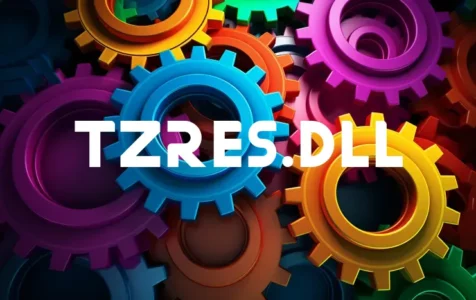What is the tzres.dll file?
The tzres.dll is a system file associated with the Windows operating system, created by Microsoft Corporation. It is an essential component specifically used for managing time zone resources within the system. Its responsibilities include ensuring the correct display and management of time zone data throughout the operating system.
Is tzres.dll Safe to Run?
As an official Windows system file, tzres.dll is safe to run on your computer. However, it is crucial to ensure that the file is located in the correct directory (usually the system32 folder) and that it is not a disguised piece of malware. Typically, the presence of this file should not raise any security concerns if it’s found in its proper location, which is the system32 directory within the Windows folder.
Could tzres.dll be a Virus or Malware?
While the authentic tzres.dll file is not a virus or malware, malicious programs can sometimes be disguised as legitimate system files like tzres.dll to escape detection. If you suspect that the file might be a malware imposter, you can perform a virus scan with your antivirus software or compare the file’s properties to the known attributes of the legitimate tzres.dll file.
Common Issues Associated with tzres.dll
Problems associated with tzres.dll are not common, but users may encounter an error stating that “tzres.dll is missing” or “tzres.dll not found” when there is a corruption or accidental deletion of the file. This error is a sign that the application or game requiring the file is unable to access it, often leading to a crash or an inability to launch the program.
Expert Tip: For smoother PC performance, consider using a PC optimization tool. It handles junk files, incorrect settings, and harmful apps. Make sure it's right for your system, and always check the EULA and Privacy Policy.
Special offer. About Outbyte, uninstall instructions, EULA, Privacy Policy.
These issues can also arise if the file has been corrupted by malicious software that’s present on your PC or due to a damaged Windows registry.
How to Fix tzres.dll Missing Error?
Below are the steps that can be taken to address issues related to tzres.dll:
1. Perform a virus scan on your entire system to rule out the possibility of malware masquerading as tzres.dll.
2. If the file is missing or corrupted, you may restore tzres.dll from the Recycle Bin (if accidentally deleted) or replace it with a fresh copy sourced from the genuine Windows installation media or a trusted system.
3. If these steps don’t work, running System File Checker (SFC) can help restore the missing or corrupted file. To use the SFC tool, follow these instructions:
– Open Command Prompt as an administrator by typing “cmd” in the start menu, right-clicking on “Command Prompt,” and choosing “Run as administrator.”
– Type `sfc /scannow` and press Enter.
– Wait for the process to complete, and follow any on-screen instructions.
For more in-depth troubleshooting, you could try a clean boot of Windows to identify if any background processes are causing conflicts with the tzres.dll file.
Should You Download tzres.dll from the Internet?
Even though some resources online offer different versions of tzres.dll for download, it’s generally not recommended to download DLL files from the internet due to security risks. Downloading system files from unofficial sources could potentially compromise your system’s integrity and security.
However, if you need to replace the tzres.dll file and cannot source it from your own system or Windows installation media, ensure that you use a reputable source and select the version that matches your system’s architecture (32-bit or 64-bit) and Windows version.
In case you need additional assistance, the community forum can be a useful resource to get help from both qualified tech specialists and experienced community members.
Summary
The tzres.dll is a critical system file for managing time zone information in Windows. While errors are not common, they can result from accidental file deletion, corruption, or malware. Fixing tzres.dll issues involves basic troubleshooting steps, such as running a virus scan, performing a system file check, or replacing the file with a genuine copy from trusted sources. It is essential to be careful when handling system files and to only download DLL files from credible sources if necessary.
